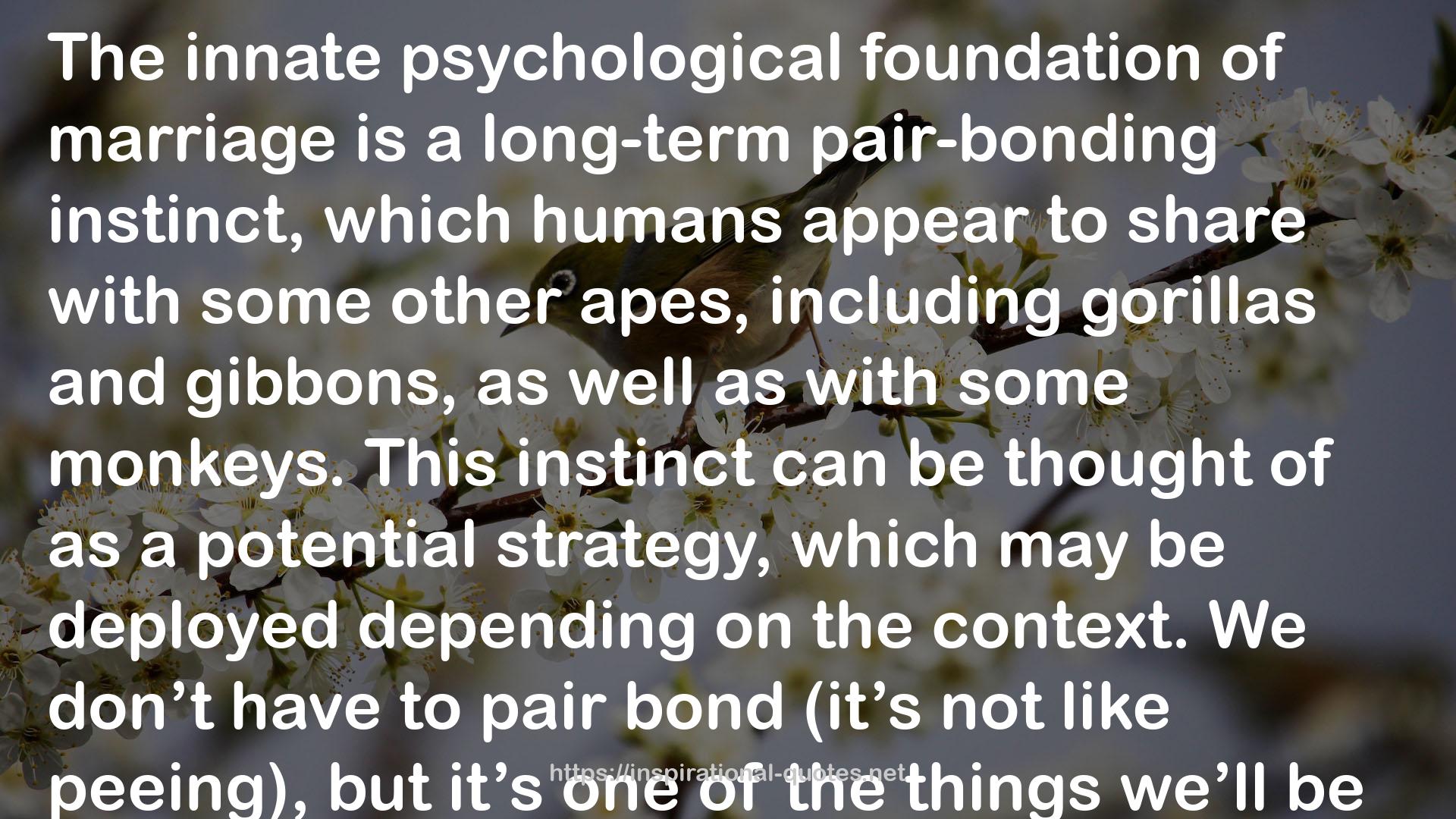" The innate psychological foundation of marriage is a long-term pair-bonding instinct, which humans appear to share with some other apes, including gorillas and gibbons, as well as with some monkeys. This instinct can be thought of as a potential strategy, which may be deployed depending on the context. We don’t have to pair bond (it’s not like peeing), but it’s one of the things we’ll be inclined to do under some circumstances. The term “pair-bonding” is often confused with notions of monogamy. It’s important to realize that pair-bonding does not imply monogamous mating. Pair-bonds form between dyads, but a single individual can have multiple pair-bonds. Gorillas, for example, often form long-term pair-bonds with multiple females at the same time. In humans, both historically and cross-culturally, individuals often pair-bonded and married more than one other person at a time—85% of human societies permitted polygamous marriage in some form. Here, pair-bonding refers to enduring, or at least not ephemeral, relationships between mates. "
― Joseph Henrich , The Secret of Our Success: How Culture Is Driving Human Evolution, Domesticating Our Species, and Making Us Smarter
